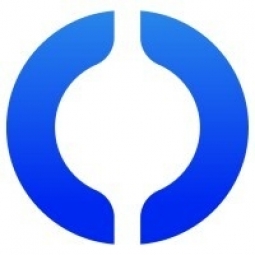Customer Company Size
SME
Region
- America
Country
- United States
Product
- Fishbowl Manufacturing
Tech Stack
- QuickBooks
Implementation Scale
- Enterprise-wide Deployment
Impact Metrics
- Productivity Improvements
- Cost Savings
Technology Category
- Functional Applications - Inventory Management Systems
- Functional Applications - Manufacturing Execution Systems (MES)
Applicable Functions
- Discrete Manufacturing
- Logistics & Transportation
Use Cases
- Inventory Management
- Predictive Replenishment
Services
- Software Design & Engineering Services
About The Customer
Crossroad Distributor Source (CDS) was founded in 2004 by Scott Campbell, a 25-year veteran in industrial and aerospace fasteners. CDS is a master distributor serving over 500 industrial, aerospace, electronic and fastener distributors throughout North America. Their 4,500 line items include specialty thread inserts, blind rivets, as well as fastener and engineering reference books. The company has five employees and a network of eleven manufacturer’s representative agencies across North America. With products sourced both domestically and globally, the purchasing function takes on an important dimension in their ability to meet customer demand and expectation. The competition is keen, so it is imperative that the company run a lean operation and focus on performance and high customer service standards to give it a sustainable competitive advantage.
The Challenge
In 2008, Crossroad Distributor Source (CDS) realized that it was outgrowing QuickBooks as an inventory management solution. The company needed distribution centers in other cities, and QuickBooks as a standalone was not an option. Other issues were identified, such as customer- and volume-specific pricing models, key performance indicators, such as on-time delivery, fill rate, and traceability recordkeeping that had to be satisfied. Additionally, CDS had made a decision to bring in house all of its kit assembly, and needed a robust software package to address all these concerns. The biggest challenge was cost. Many of the accounting and inventory management software systems used in the industry were costly, often costing a minimum of $15,000 before you actually got what you wanted. At this point in the young company’s history, that sort of expenditure was impractical.
The Solution
Casey Campbell, General Manager of CDS, identified Fishbowl as a potential solution. The fact that it would integrate with QuickBooks was a strong advantage. In investigating the software, Casey was very impressed by the Fishbowl reps with their proactive responsiveness. In the first call to Fishbowl, the rep led Casey through the GoToMeeting presentation where he could see how the user interface worked. When he saw how easy it was to use, and how cost effective the product would be, the decision-making process was considerably shortened. Once the product was in hand and installed, CDS began the process of moving its inventory information from QuickBooks to Fishbowl. Detailed pre-planning had determined how they wanted inventory records coded. The next step was customizing reports so that the company could predict sales turnover and improve the reordering process. With Fishbowl reorder reports and auto-PO feature, orders can be placed with the click of a mouse. They were also able to immediately create “external” warehouses and begin the transfer of inventory. Fishbowl makes it very easy and efficient to transfer inventory between warehouses.
Operational Impact
Quantitative Benefit

Case Study missing?
Start adding your own!
Register with your work email and create a new case study profile for your business.
Related Case Studies.

Case Study
Hospital Inventory Management
The hospital supply chain team is responsible for ensuring that the right medical supplies are readily available to clinicians when and where needed, and to do so in the most efficient manner possible. However, many of the systems and processes in use at the cancer center for supply chain management were not best suited to support these goals. Barcoding technology, a commonly used method for inventory management of medical supplies, is labor intensive, time consuming, does not provide real-time visibility into inventory levels and can be prone to error. Consequently, the lack of accurate and real-time visibility into inventory levels across multiple supply rooms in multiple hospital facilities creates additional inefficiency in the system causing over-ordering, hoarding, and wasted supplies. Other sources of waste and cost were also identified as candidates for improvement. Existing systems and processes did not provide adequate security for high-cost inventory within the hospital, which was another driver of cost. A lack of visibility into expiration dates for supplies resulted in supplies being wasted due to past expiry dates. Storage of supplies was also a key consideration given the location of the cancer center’s facilities in a dense urban setting, where space is always at a premium. In order to address the challenges outlined above, the hospital sought a solution that would provide real-time inventory information with high levels of accuracy, reduce the level of manual effort required and enable data driven decision making to ensure that the right supplies were readily available to clinicians in the right location at the right time.

Case Study
Hardware Retailer Uses Data Warehouse to Track Inventory
Ace tracked which products retailers ordered, when they were ordered and shipped. However, the company could not track or forecast actual sales. Data used for reporting was up to a one-week old, owing to performance and data cleansing issues. Requirement to integrate wholesale and inventory data with POS data to help drive key business decisions, improve category management, lower inventory costs and optimize pricing. Reliance on custom coding to integrate POS data was excessively resource intensive and led to major performance constraints.

Case Study
Remake Enterprise-to-production System
The client was running a legacy material flow tracking system and wanted to replace the system with a more effective one as the system was increasingly expensive to maintain and support and also was not extendable. The client's IT landscape was filled with modern applications and it was difficult to interface the material flow tracking system with modern applications.

Case Study
Expertech - Capital Tool Inventory
Costly tools used to splice fiber optic cables are an important part of Expertech’s operational and capitalized expenses, but the company did not have an automated system in place to track their tools and optimize their usage. The existing data in its tracking system was inaccurate and required manual updating, making it essential for the company to implement an efficient process to track and follow up on its capital tool inventory.









